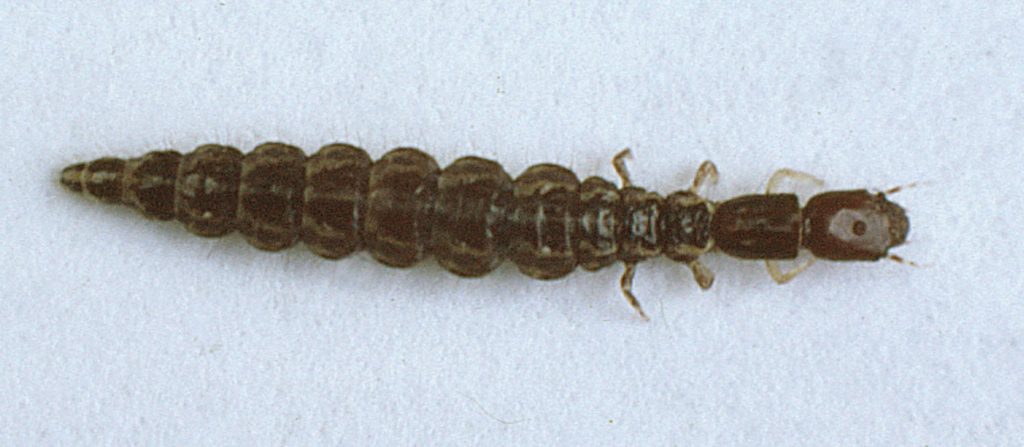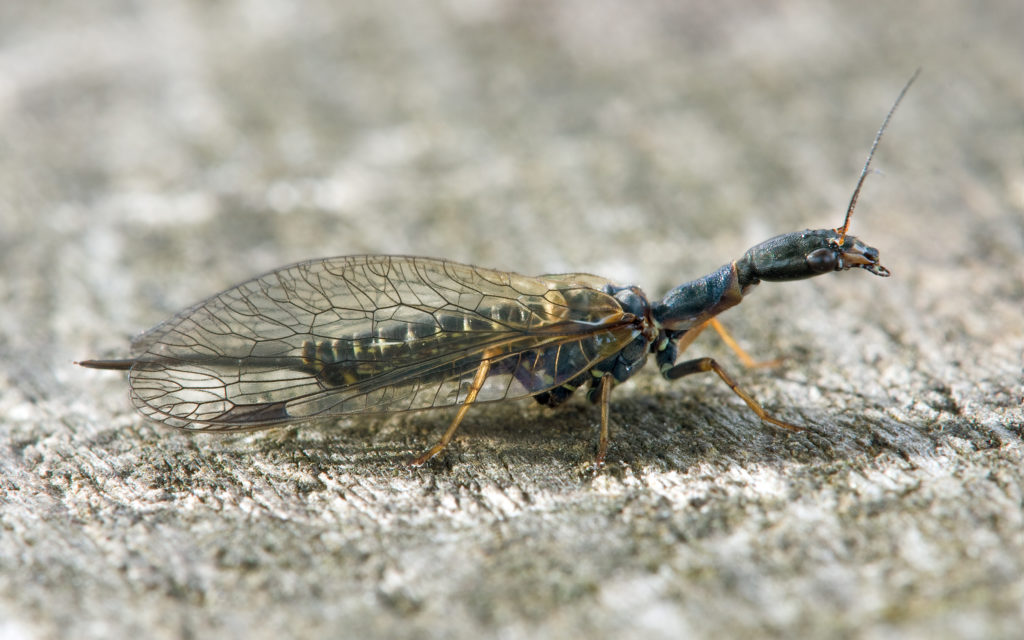Snakeflies
Of the three orders in the Neuropterida, the Raphidioptera may be the most basal, leaving the Neuroptera and Megaloptera as sister-groups.
They get the common name of snakeflies from their elongate pronotum which is mobile and can be elevated such that the insect resembles a snake about to strike at its prey; the German name of Kamelhalsfliegen, or camel-neck flies, is equally appropriate.
 Larva of raphidiid Credit Peter Barnard
Larva of raphidiid Credit Peter BarnardBoth the adults and larvae are predatory, though adults are also reported as feeding on pollen. Snakefly larvae are often found under tree bark where they prey on other insects, but much more work is needed to elucidate the life cycles.
 Phaeostigma major Credit Richard Bartz
Phaeostigma major Credit Richard BartzAdults are not often seen as they spend much of their time high in the tree canopy; newly emerged specimens can be found at lower levels, and the females descend to oviposit, but otherwise any snakeflies seen by the casual observer have probably been dislodged from the canopy by strong winds.
Worldwide there are around 225 known species in 2 families; in Britain there are 4 species in 1 family.
Identification help